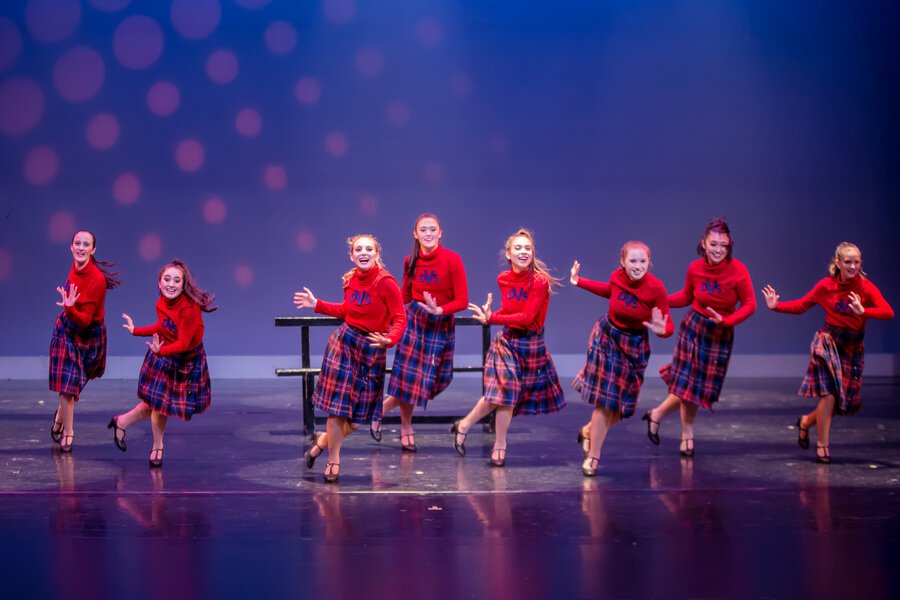As someone who spent the majority of their professional performing career in the musical theatre genre and is passionate about the content and context to which it is taught in, below are three tips that hopefully will offer a new perspective on setting pieces and help continue keeping the magic of classic musical theatre alive.
Good luck!
See you in the dance studio,
Jess
#1. DEMONSTRATE COMPLETE UNDERSTANDING: The challenge with setting a musical theatre piece, especially for competition is that you’re extrapolating a two and a half-three minute out of an entire show and expecting to get the message across. It is however, still possible. How? By ensuring you, as the choreographer understand that choreography in the musical theatre genre is there to support and be supported by the book, score and lyrics. It has to work in tandem, otherwise the show is unsuccessful. There is a very specific formula to musical theatre and our most beloved musicals are examples of that. Even more contemporary musicals follow the formula, even if they have found a way to turn it on its head and reinvent the wheel. It’s our responsibility that we are not just giving our dancers movement for movement sake, but ensuring they also understand the history and details of the show which you are setting. This goes for any age and level. What is it about? Who are the characters? How do the characters relate to one another? What is the song about? Who was the original show choreographer? Who did the set design and costumes? What era was this musical set? When did it premiere? What is the style of the choreography? Etc. Teaching our students to understand the “why’s,” and not just the “what’s” is essential. Teaching them the historical references so they are familiar with the show will make their performances richer, more dynamic and better received by audiences and judges who are musical theatre experts and aficionados. Seasoned judges will recognize a choreographer and dancers who “get it” vs. those doing a “cute” dance to a musical theatre song.
#2 PRESENTATION COUNTS: I’ll be honest, I’m really not sure where this next trend has emerged from. Remember, costumes are a HUGE part of any musical. They represent who these characters in this world are and can signify everything from era, age to status. So, please, please, please if you are choreographing a musical theatre piece and it’s not to Lion King, Once on this Island, King and I, Aladdin, Aida, etc. then please don’t put your dancers in bare feet and costumes which have absolutely no relevance to the song they are dancing to. This doesn’t mean you have to seek out the most ridiculously expensive costumes out there, but it does mean that no professional judge with a strong working knowledge in musical theatre wants to see dancers in a bra-lette and briefs dancing bare legged and barefoot to Anything Goes. (Yes, I’ve seen it.) Give it some thought and while you may want to add a twist to costuming to reinvent the wheel, great! But please, use the proper footwear. And if your dancers are not yet working in heels, a classic jazz shoe will beautifully suffice to showcase leg line and feet.
#3 MUSIC SELECTION: Choosing a musical theatre song for a piece is challenging when you want to use something that is not overdone. It becomes even more challenging when you are trying to select something that makes sense for your specific dancers. There have been many, many times where I’ve seen choreographers select music which was too mature, too challenging, too overdone and just out of touch to any relatability for young dancers. Remembering that the best performances are ones in which your dancers can connect to the music and demonstrate a real understanding of what and why they are dancing is key. This also holds true for specific styles. Giving a 10 or 11 year old a provocative Fosse number may not be the best choice. Now is not the time to choreograph something you might have aspirations to dance to. Always remembering who your dancer is first. Some of the best musical theatre numbers I’ve seen and set myself were not always the most complicated ones technically or stylistically. They were the ones dancers could relate and attach to. Give them time to grow into the more mature, advanced and sophisticated techniques as they develop. There’s plenty in the musical theatre library to go around. Select a successful piece you enjoy choreographing to, they enjoy dancing to and the audience enjoys watching!

Join our Community of Dance Educators By CLICKING HERE
Get instant access to 1000+ videos including full length master classes, "How To" teacher training tips, Choreography with break downs and 100's of lesson plans and teacher enhancement articles
We offer dance studio owners the ultimate toolkit with business building articles, videos and downloadable forms. Topics include help with marketing, increasing revenue and improving communication.
Our Studio Owners VIP consulting services offer one-on-one coaching for a more hands on approach to your business development. Inspiration is only a click away!

